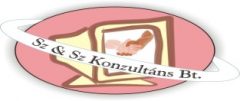Whether you are a skilled tarot reader or simply beginning, learning to check out tarot cards can be an effective tool for self-reflection and guidance. In this extensive guide, we will certainly check out the background of tarot cards, the different kinds of decks available, and just how to carry out a tarot card reading on your own free astrology reading or others.
The History of Tarot Card Cards
While the beginnings of tarot card cards are shrouded in secret, it is believed that they first appeared in Europe in the 15th century. Originally utilized as playing cards, tarot card decks advanced into a tool for prophecy and spiritual advice. One of the most frequently used tarot card deck today is the Rider-Waite deck, which was created in the very early 20th century by musician Pamela Colman Smith and wizard A. E. Waite.
Each tarot card in a deck is connected with certain signs, imagery, and meanings that can be interpreted in various means relying on the context of the analysis. The Major Arcana cards represent considerable life events and spiritual lessons, while the Minor Arcana cards focus on day-to-day obstacles and experiences.
Some fortuneteller believe that the cards have a mystical link to deep space and can provide insights right into past, existing, and future occasions. Others see tarot card as a device for self-contemplation and self-discovery.
- Major Arcana Cards: medium reader The Fool, The Magician, The High Priestess, The Empress, The Emperor, The Hierophant, The Lovers, The Chariot, Stamina, The Anchorite, Wheel of Lot Of Money, Justice, The Hanged Male, Death, Temperance, The Devil, The Tower, The Star, The Moon, The Sunlight, Reasoning, The World
- Minor Arcana Cards: Sticks, Mugs, Swords, Pentacles
Choosing a Tarot Card Deck
There are numerous different tarot card decks available, each with its very own unique artwork, motifs, and analyses. When choosing a tarot card deck, it is necessary to select one that resonates with you on a personal level. Some preferred tarot decks consist of the Thoth Tarot card, the Tarot Card of Marseille, and the Wild Unidentified Tarot.
Prior to conducting a tarot analysis, put in the time to acquaint yourself with your deck and its imagery. Practice pulling a card each day and assessing its definition to strengthen your link to the cards.
Conducting a Tarot Analysis
There are many different methods to conduct a tarot analysis, relying on your individual preferences and the nature of the question you are looking for advice on. Some typical tarot spreads include the Celtic Cross spread, the Three-Card spread, and the Past-Present-Future spread.
Prior to starting an analysis, take a couple of moments to ground yourself and establish your purposes for the reading. Shuffle the deck and concentrate on the question or issue handy. As you set out the cards, take note of any type of patterns, signs, or styles that emerge.
Interpreting tarot cards is a very user-friendly process, and there is no right or wrong way to check out the cards. Count on your impulses and enable the imagery on the cards to assist you in revealing insights and messages.
Tarot Card Card Meanings
Each tarot card has its own unique definition and symbolism that can differ depending upon the context of the reading. While there are lots of sources offered that supply analyses of the cards, it is necessary to create your own intuitive understanding of the cards.
- The Fool: New beginnings, spontaneity, virtue
- The Illusionist: Manifestation, self-discipline, creative thinking
- The High Priestess: Intuition, secret, subconscious mind
- The Empress: Fertility, wealth, supporting
- The Emperor: Authority, framework, leadership
Final thought
Reading tarot cards can be a powerful device for obtaining insight, clarity, and support in all areas of life. Whether you are trying to find instructions in your job, connections, or personal development, tarot card can offer a fresh viewpoint and new insights into your current scenarios.
